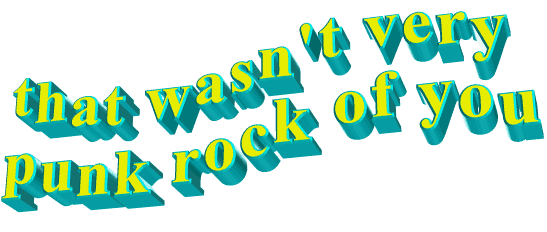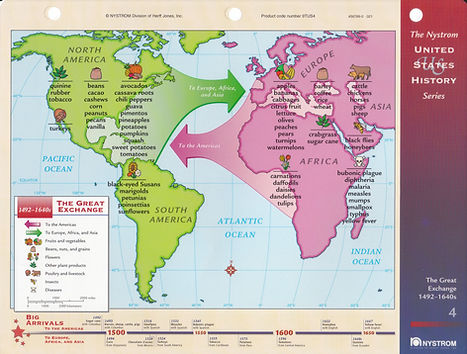AP
Est. 1300
Get Wrecked for European History

Drive to Explore
The rise of mercantilism was a big deeal concerning commercial development and oversea colonies. Many countries during this time tried to limit their import while increasing their exports for M A X I M U M P R O F I T. At this time, most of the state's money was controlled by bankers and the Navigation Act had caused all able-bodied people to have to work at some profitable trade and their hours to be fixed. Spain spent a lot of time trying to find all the gold and silver in the world because they followed mercantilism. Mercantilism was the belief that the riches in the world were limited, so in order to be successful, one should try to aquire as many of these riches as possible.
Source(s): http://www.fcahomeschool.com/samplelessons/americanhistory-2.htm
European states sought direct access to gold and spices in several ways. Originally they tried travelling straight across the Middle East to get them from Asia and India, but it took far too long and increased prices. So, Europeans started to travel to Asia using the Indian Ocean as a trade route. They slowly established port cities along coasts so ships could get more supplies on the way to their destination. This allowed goods (including luxery goods) to be transported faster and bought cheaper once they got to Europe. How did getting these goods translate into state power and personal wealth? Well, when you can get things that are normally really expensive for cheap, you can sell them for profit.
Sources(s): A History of Western Society by McKay

Religion was one of the larger reasons that Europeans had for exploration, other than trade. Some suppose this excitement for finding new people to convert to christianity stemmed from the conquistadors in the Iberian penninsula who drove out the Muslims. So these Europeans went to the New World and established missionaries and other places, then they would help the natives by supplying jobs, food, and housing. But of course they would have the natives be converted to Christianity and teach their kids to follow the bible. Or they would just tell them to follow the bible and assume they listened, mostly because they didn't say they did not accept their teachings.
Source(s): A History of Western Society by McKay
Technological Advances
Many new or improved technologies helped the Europeans to travel and conquer the new lands they 'discovered'.
The magnetic compass was invented in China and reached Europe in the 12th century through Arab trading. This helped sailors to figure out the direction they were headed, and find their position at sea.
The quadrant helped sailors to determine their latitude by aligning the device with the ever present North Star at might.
The astrolabe was already invented by ancient Greeks, but improvements made by Muslim navigators in the 15th century helped dramatically. it could now help sailors to plot their latitude, or distance North or South of the equator, with marking precision. this was done by using the astrolabe to determine the altitude of the Sun compared to where the sailors and ship were.
Guns and gunpowder were undisputedly the most important technology that helped Europeans during this time of exploration and conquering. Invented in China in the 11th century and brought to Europe through the Silk Road. Europeans quickly started using guns and gunpowder in warfare, giving them a larger soldier mortality rate than before. And when they traveled to foreign lands that had not yet been introduced to gunpowder, they had the upper hand and could easily take over the land.
Horses also played an important role in the conquering of the new worlds. Many Europeans brought horses with them when they went on voyages, as they were plentiful in Europe. During battles, many people began to fight on horseback. This increased speed and made people less likely to be shot and killed, as they were higher up and a faster target. It was more likely for you to injure or kill the horse than the rider.
Source: A History of Western Society by McKay, http://www.historyguide.org/earlymod/lecture2c.html , The West in the World by McGraw Hill
Establishing Oversea Empires
The Portuguese were one of the European countries with a strong navy and started exploring oversea lands in 1415. They traveled to the Atlantic islands in 1420 and to Africa in 1430. By 1500 the Portuguese were controlling the flow of gold from Africa into Europe. Around 1490, Portugal found a route to India to buy spices for cheap and bring them to Europe to sell. In 1460, Portugal first established plantations in South America.
Source(s): A History of Western Society by McKay
The Spanish Empire at it's height was pretty heckin impressive. It owned a lot of land, including large chunks of the New World and tons of colonies in South Asia. Some of these include present day Phillipines, Central America, Indonesia, little areas on the coast of Africa, and everywhere in South America except for Brazil. They were very Catholic, and tried to convert everyone to christianity. They were also pretty rich, and got a ton of mined silver and gold from their colonies, plus any precious gems they could find in their new territories!
Source(s): A History of Western Society by McKay
Competition for trade among European countries obviously led to a lot of tension. Why did they want to trade? Because the more you exported, the more money you got! And according to mercantilism, you need to get as much money as you can because everything on Earth is limited. And so, oppertunitues for trade are pretty limited too. Of course countries will become rivals and conflict over this, Europeans all wanted to get rich cause then you could buy nice things and everyone would be like "wowee look at all thei gold! they must be so important!". And as we've seen many times throughout history, like with England controlling who the American colonies could trade with. Because when they did that, trade turned into their favor and they got rich.
Source(s): A History of Western Society by McKay

Global Expansion
So, after seeing how successful Spain and Portugal got from their establishments of colonies and new trade networks, France England and the Netherlands wanted in on that. England started with Roanoke, that didn't do too well as they kinda just disappeared, no trace or anything. England then started establishing colonies along the east coast of North America. But these colonies were more established so protestants could have religious freedom instead of getting money. France started establishing colonies up more north-North America than England. While these colonies were much smaller, they were still avid explorers and traders, and traded often with natives. They even had treaties with some native tribes! France also made colonies in Hispaniola and made plantations to grow tobacco and sugar to get more profit than just with trading. And, all these colonies being established in the Americas helped create the Atlantic Slave Trade! And it made a bit of a cultural exchange.
Source(s): A History of Western Society by McKay

Before the Age of Exploration, if a European wanted anything considered fancy or elite, they had to go to Italy. Why Italy? Because that was the place where all the goods from the Middle East and Asia arrived. But then the Age of Exploration happened and we found a better way to get them goods so the Atlantic States as then they best place to get those spices and silks cause they were hecka cheaper!! It was mainly due to the establishment of caravels and oversea trade routes so spices, silks, and slaves could be bought for much cheaper. Cheaper is better so things never went back.
Source(s): A History of Western Society by McKay
The Columbian Exchange created many different oppurtunities for different people. As Europeans 'discovered' the New World, they brought food, technology, and diseases to the natives. They also took food and animals from the New World back to Europe.
Some of the technologies that were brought mostly agricultural tools, architecture, weapons, and the written language. Europeans had tried teaching them written European languages to break down social barriers and try to convert them to Christianity. Europeans had also brought new technologies such as metal plows and the use of animals to cultivate land. With these advances in farming techniques, the output of crops increased dramatically. Europeans also brought weapons including iron and steel knives, to trade for goods and labor from the natives. And since these weapons were superior compared to the natices', the Europeans were able to get more in trade than if they didn't give their weapons.
One of the better parts of the Columbian Trade was all the animals and edible plants that were exchanged. Europeans brought horses, pigs, chickens, cows, and sheep. These animals were used mostly for food because they breeded fast and produced quite a bit of meat and sometimes milk or eggs. Horses were the only aimals not used for food but instead for transportation. The animals that Europeans gained from the new world were not as life changing. Europeans recieved llamas, alpacas, turkeys, and guinea pigs. The plants that that were traded wee much more important in changing people's diets. Europeans got tomatos, squash, beans, cacao, pineapples, peanuts, avocados, potatos, and corn. All these new foods became hits in the Old World, especially the life changing potato and corn. They were both hardy plants that grew in many places where wheat couldn't, and became a staple for many people. The most important plant that was introduced to the New World was sugarcane, which was grown on many plantations.
Now, the worse part of the Columbian exchange is, of course, the diseases that were spread all over. Europeans brought over smallpox, malaria, measles, yellow fever, chicken pox, and influenza. These proved deadly for the natives, as they hadn;t been exposed to these diseases before and many dies. The diseases brought to Europe from the Old World included hepatitus, syphilus, polio, and encaphalitus. These were nearly as bad as the ones brought to the New World. Either way, this exchange of disease caused many epidemics and deaths.
Source(s): http://public.gettysburg.edu/~tshannon/hist106web/site19/
Slaves were always very common in European, but the main source of slaves then was white slaves from the Eastern Mediterranian. This halt of white slaves was around the same time as European exploration. Now, Europeans who traveled to the Americas started growing large plantations there, most commonly filled with sugar, but sometimes consisted of corn, cotton, rum, indigo,wheat or tobacco. Europeans wouldn't work on these plantations themselves, and they had no white slaves coming from the Mediterranian to do it for them. So, they decided to turn to Africa. First the Portugeuse raided sub-saharan Africa and just stole the slaves. But it was much easier to buy them from local tribe leaders, who were selling slaves captured through warfare with neighboring tribes. These Africans were taken to Europe, and eventually the Americas to work as slaves. This transAtlantic slave trade began in 1518, after the king of Spain made it legal for slaves to be brought to the New World, and would not cease for a couple thousand years. Slaves in the New World worked deadly overs, all year round, in poor conditions. This caused many to die due to exhaustion.
Source- A History of Western Society by McKay
